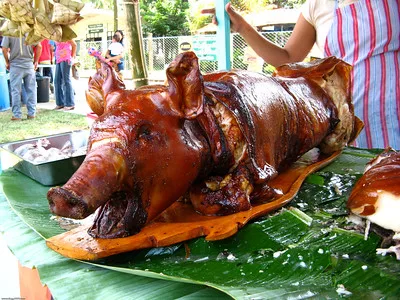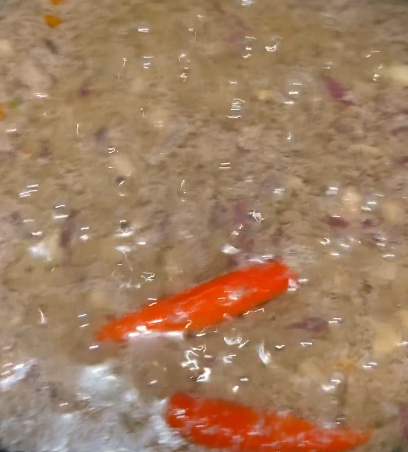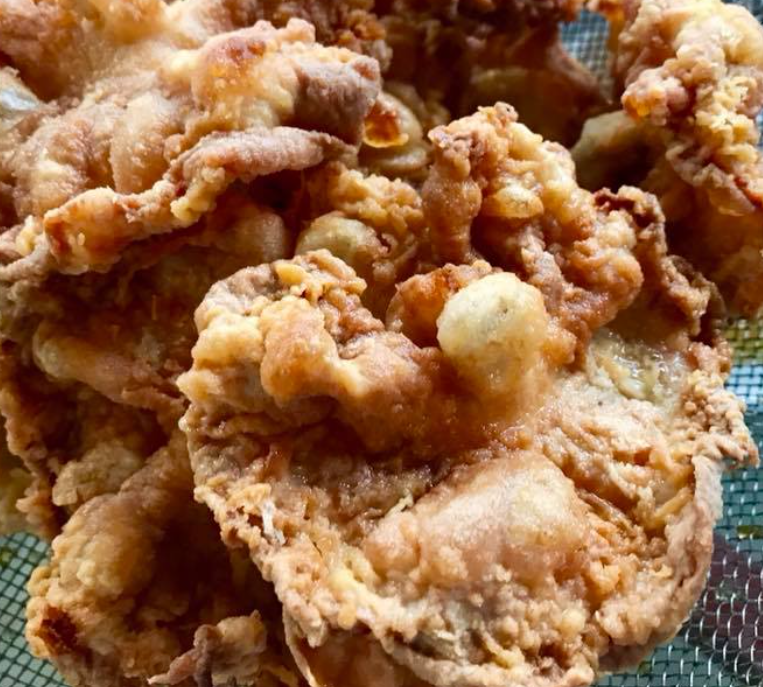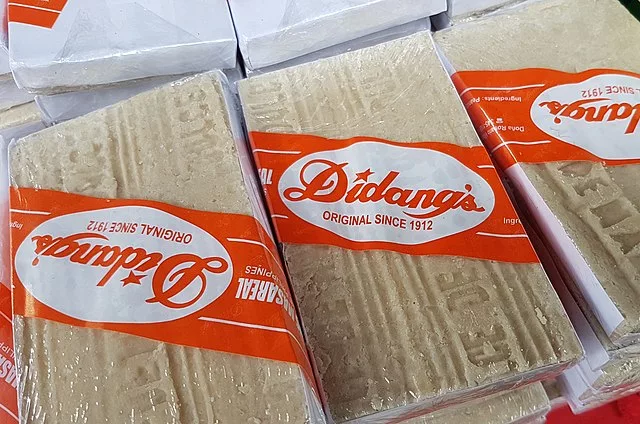
Introduction to Cebu City’s Culinary Heritage
Cebu City, often referred to as the “Queen City of the South,” boasts a culinary heritage as rich and diverse as its storied past. The local cuisine of Cebu City is a vibrant tapestry woven from centuries of historical influences, including Spanish, Chinese, and indigenous Filipino cultures. This convergence of culinary traditions has resulted in a unique gastronomic identity that continues to captivate both locals and visitors alike.
Located strategically in the central Philippines, Cebu City has long been a pivotal trade hub. Its position has facilitated the exchange of goods, ideas, and, importantly, culinary practices. The Spanish colonization, which lasted for over three centuries, introduced a plethora of new ingredients and cooking techniques. Dishes such as lechon, a succulent roasted pig, and arroz a la Valenciana, a Filipino take on the Spanish paella, are testaments to this enduring influence.
Simultaneously, Chinese traders brought their own culinary customs, adding another layer of complexity to Cebu’s food scene. The local cuisine seamlessly incorporates elements such as noodles, dumplings, and various stir-fried dishes, blending them with indigenous ingredients to create something uniquely Cebuan. One notable example is bam-i, a flavorful noodle dish that combines Chinese and Filipino flavors.
The indigenous Filipino culture, with its deep connection to the land and sea, has also significantly shaped Cebu City’s culinary landscape. Fresh seafood, tropical fruits, and native herbs and spices form the backbone of many traditional dishes. Kinilaw, a Filipino-style ceviche, and tinola, a soothing chicken soup, are just a few examples where local ingredients shine.
By intertwining these diverse influences, the local cuisine of Cebu City offers a culinary experience that is both rooted in tradition and constantly evolving. It is this blend of historical depth and geographic richness that makes Cebu’s food scene truly exceptional and a must-explore for any culinary enthusiast.
Iconic Cebuano Dishes: A Must-Try List
Cebu City is renowned for its vibrant local cuisine, showcasing a rich array of flavors and culinary traditions. Among the most iconic Cebuano dishes is Lechon, a sumptuous roast pig that has gained international acclaim. Prepared with meticulous care, the pig is marinated and slowly roasted over charcoal, resulting in crispy skin and tender, flavorful meat. This dish is a centerpiece at many celebrations and feasts, embodying the communal spirit of Cebuano culture. For the best Lechon in Cebu City, visitors should head to establishments like Rico’s Lechon or CNT Lechon, both of which are celebrated for their exceptional quality.
Another quintessential dish is Sinuglaw, a unique combination of Sinugba (grilled pork) and Kinilaw (raw fish ceviche). This fusion highlights the ingenuity and resourcefulness of Cebuano chefs, marrying the smokiness of grilled meat with the refreshing zest of raw fish marinated in vinegar, calamansi juice, and spices. The contrasting textures and flavors make Sinuglaw a delightful treat for the palate. Visitors can savor top-notch Sinuglaw at Bluewater Maribago Beach Resort or STK ta Bay!, where the dish is expertly prepared.
Puso, or hanging rice, is a staple accompaniment to many Cebuano dishes. This rice is uniquely wrapped in woven palm leaves, forming a compact, portable package that is perfect for on-the-go dining. The method of preparation ensures that the rice remains moist and flavorful. Puso is often enjoyed with Lechon or grilled meats, enhancing the overall dining experience. Street vendors and local eateries across Cebu City, such as Larsian BBQ, offer Puso, allowing visitors to enjoy this traditional Cebuano staple in an authentic setting.
These iconic Cebuano dishes not only provide a delicious introduction to local cuisine but also offer a glimpse into the cultural heritage and culinary artistry of Cebu City. Whether indulging in the crispy splendor of Lechon, the flavorful harmony of Sinuglaw, or the convenient delight of Puso, visitors are sure to experience the rich culinary traditions that define this vibrant city.
Street Food Adventures in Cebu City

Cebu City’s street food scene offers an exhilarating culinary adventure that showcases the rich diversity of local cuisine. A visit to the bustling streets of Cebu reveals a treasure trove of flavors, textures, and aromas that reflect the city’s vibrant culture and history. One of the must-try delicacies is Tuslob Buwa, a unique dish that consists of a bubbling, savory sauce made from pig brain, liver, and spices. The term “Tuslob Buwa” translates to “dip in bubbles,” and the dish is typically enjoyed by dipping rice into the bubbling sauce, creating an interactive and flavorful dining experience.

Another local favorite is Ginabot, deep-fried pork intestines that are crispy on the outside but tender and flavorful on the inside. Often served with vinegar and chili for dipping, Ginabot is a beloved street food that offers a delightful contrast of textures and a rich, savory taste. For those seeking a more adventurous culinary experience, Balut is a must-try. This fertilized duck egg, which contains a partially developed embryo, is enjoyed by many locals for its unique combination of flavors and textures. Typically seasoned with a pinch of salt or a splash of vinegar, Balut is both a delicacy and a conversation starter.
To fully immerse oneself in Cebu City’s street food culture, visiting popular markets and food stalls is essential. Larsian BBQ, located near Fuente Osmeña Circle, is a renowned food haven where visitors can indulge in a variety of grilled meats, seafood, and other local delicacies. Pungko-pungko sa Fuente is another popular spot, known for its affordable and delicious street food offerings, including Ginabot and other fried treats. For those looking to explore beyond the city center, Taboan Public Market is a great destination to discover a wide array of local ingredients and snacks, providing an authentic taste of Cebu’s culinary heritage.
Seafood Delights: Fresh Flavors from the Sea
Cebu City, being a coastal paradise, boasts an abundance of fresh seafood, making it a haven for seafood enthusiasts. The proximity to the ocean ensures a steady supply of the freshest catches, which are skillfully transformed into delectable dishes that capture the essence of the sea. Among the myriad offerings, several standout dishes have become iconic representations of Cebu’s culinary prowess.
One such dish is Kinilaw, a raw fish salad that is often compared to ceviche. Kinilaw is prepared using the freshest fish, typically tuna or mackerel, which is marinated in vinegar, calamansi (a local citrus fruit), ginger, and chili peppers. The result is a tangy and refreshing dish that perfectly balances acidity and spice, a true testament to the vibrancy of local cuisine in Cebu City.
Another must-try is SuTuKil, an acronym for Sugba, Tula, and Kilaw, which represents three distinct methods of preparing seafood. Sugba refers to grilling, Tula is a type of seafood stew, and Kilaw is similar to Kinilaw but often includes other ingredients like meat or vegetables. This trio of cooking techniques offers a comprehensive taste of how locals enjoy their seafood, showcasing the versatility and depth of Cebuano culinary traditions.
Shellfish lovers will also find paradise in Cebu City. From succulent crabs and plump prawns to a variety of clams and mussels, the city’s seafood markets and restaurants offer a plethora of options to satisfy any craving. Dishes like baked scallops, chili crabs, and garlic butter prawns are particularly popular, each prepared with a touch of local flair that elevates the natural flavors of the sea.
To experience these seafood delights, visitors can explore local seafood markets such as the Pasil Fish Market, where vendors offer an impressive array of fresh catches daily. For those who prefer dining out, renowned seafood restaurants such as STK ta Bay! and Isla Sugbu Seafood City provide an unforgettable culinary experience, bringing the best of Cebu’s seafood to the table with finesse and authenticity.
Sweet Treats and Desserts: Cebuano Pastries and Delicacies

Cebu City’s culinary landscape is not only celebrated for its savory dishes but also its array of delectable sweet treats and desserts. Among these, Otap, Masareal, and Bibingka stand out as iconic representatives of Cebuano pastries and delicacies. Each of these sweets carries a rich historical and cultural significance that makes them more than just delightful indulgences.
Otap, a crispy puff pastry, is a beloved snack in Cebu. This delicate pastry is made from a combination of flour, shortening, and sugar, resulting in a flaky, sweet treat that melts in your mouth. Otap is often enjoyed with a cup of coffee or hot chocolate, making it a perfect companion for a leisurely afternoon. The origins of Otap can be traced back to Spanish influences, reflecting the deep-rooted colonial history of the Philippines. Nowadays, many local bakeries, such as Shamrock and Titay’s, produce Otap, ensuring its continued popularity among both locals and tourists.
Masareal, a peanut nougat, offers a different note to the sweet symphony of Cebuano cuisine. Made from finely ground peanuts mixed with sugar and water, Masareal forms a chewy, nutty treat that is both satisfying and rich in flavor. This delicacy is particularly popular during festivals and special occasions. The town of Mandaue, just a short drive from Cebu City, is famous for its Masareal, with many local stores like Didang’s and Aling Nene’s offering this traditional sweet.
Another must-try dessert is Bibingka, a rice cake that holds a special place in Filipino Christmas traditions but is enjoyed year-round in Cebu. Bibingka is made from rice flour, coconut milk, and sugar, and is traditionally cooked in clay pots lined with banana leaves, giving it a distinctive aroma and flavor. Topped with salted egg, cheese, and grated coconut, Bibingka offers a unique blend of sweet and savory flavors. Famous spots to savor Bibingka in Cebu include the stalls at Carbon Market and the well-known bibingka vendors in Liloan.
Exploring the local cuisine of Cebu City is incomplete without indulging in these sweet treats. Each bite of Otap, Masareal, and Bibingka not only delights the palate but also provides a taste of Cebu’s rich cultural heritage.
Fusion Cuisine: Modern Takes on Traditional Dishes
In recent years, Cebu City’s culinary landscape has undergone a remarkable transformation, with contemporary chefs infusing traditional Cebuano flavors with modern culinary techniques. This innovative approach has given rise to a vibrant fusion cuisine scene, where the rich heritage of local ingredients meets contemporary culinary artistry.
One notable example is the “Lechon Belly Roll,” a modern twist on Cebu’s iconic roasted pig, lechon. Traditionally, lechon is prepared whole and slow-roasted over a charcoal pit. However, chefs now experiment with deconstructing the dish, seasoning the belly with herbs and spices before rolling and roasting it to perfection. This method not only retains the succulent flavors of lechon but also adds a refined presentation that appeals to modern diners.
Another innovative dish is the “Sinigang Ramen,” where the traditional Filipino sour soup, sinigang, is reimagined with a Japanese twist. By incorporating miso broth and ramen noodles, chefs create a unique blend that retains the tangy essence of sinigang while introducing the comforting attributes of ramen. This fusion dish has become a favorite among both locals and visitors seeking new culinary experiences in Cebu City.
Restaurants such as “The Pig & Palm” have become pioneers in Cebu’s fusion cuisine movement. Helmed by Michelin-starred chef Jason Atherton, this establishment seamlessly blends Cebuano flavors with international techniques. Dishes like the “Pork Sisig Croquettes” and “Kinilaw Ceviche” exemplify the restaurant’s commitment to honoring traditional flavors while presenting them in contemporary forms.
Likewise, “Abaca Baking Company” has garnered acclaim for its innovative approach to local cuisine. By incorporating Cebuano ingredients into their pastries and bread, they create a unique gastronomic experience that balances tradition with modernity. Their “Ube Ensaymada” and “Mango Tart” are prime examples of how traditional flavors can be reinterpreted to suit modern tastes.
These modern interpretations of traditional dishes do not merely aim to impress; they also pay homage to Cebu City’s rich culinary heritage. By blending the old with the new, chefs and restaurateurs in Cebu are creating a dynamic food scene that respects tradition while pushing the boundaries of culinary innovation. This fusion of flavors and techniques ensures that the local cuisine of Cebu City continues to evolve, offering both nostalgic and novel experiences for all who indulge in its delights.
Farm-to-Table Experience: Organic and Sustainable Dining
The farm-to-table movement is steadily gaining momentum in Cebu City, reflecting a global shift towards organic and sustainable dining. This culinary trend emphasizes the use of locally-sourced and organic ingredients, ensuring that the food served is not only fresh but also environmentally friendly and ethically produced. Several establishments in Cebu City are at the forefront of this movement, championing sustainability and ethical sourcing in their culinary practices.
One notable restaurant leading the charge is “The Weekend Farmer,” which prides itself on an entirely organic menu. This establishment collaborates directly with local farmers, ensuring that every ingredient is traceable and sustainably produced. By doing so, “The Weekend Farmer” supports the local agricultural community while providing diners with a true taste of Cebu’s natural bounty.
Another prominent player in the farm-to-table scene is “Farm to Folk.” This restaurant takes sustainability to the next level by incorporating zero-waste practices and maintaining a close relationship with organic farms in the region. Their menu changes seasonally, reflecting the freshest produce available. “Farm to Folk” not only offers delicious meals but also educates its patrons about the importance of sustainable dining practices.
The impact of the farm-to-table movement on Cebu City’s local cuisine is significant. It promotes a healthier lifestyle by offering dishes that are free from harmful pesticides and chemicals. Moreover, it encourages environmental stewardship, as the reduced need for transportation of ingredients lowers the carbon footprint. Additionally, supporting local farmers helps to stimulate the local economy and preserve traditional farming practices.
As more restaurants in Cebu City adopt this approach, the benefits extend beyond just the dining experience. The farm-to-table movement fosters a deeper connection between consumers and the origins of their food, promoting a more conscious and responsible way of eating. This trend not only enhances the local cuisine of Cebu City but also sets a positive example for sustainable dining practices worldwide.
Culinary Tours and Cooking Classes: Immersive Food Experiences
For visitors keen on delving deeper into the local cuisine of Cebu City, culinary tours and cooking classes offer an unparalleled immersive experience. These hands-on activities provide an engaging way to understand the unique flavors and traditional cooking techniques that define Cebuano cuisine.
Several reputable tour operators and cooking schools in Cebu City offer these enriching experiences. Among the popular names are Cebu Culinary Tour, Flavors of Cebu, and MyCebu Cooking Classes. Each of these operators provides a distinctive itinerary designed to give participants a thorough understanding of the local food culture.
A typical culinary tour might begin with a visit to one of Cebu City’s bustling markets, such as the Taboan Public Market. Here, participants can immerse themselves in the vibrant atmosphere, learning to select the freshest ingredients and understanding the importance of each component in Cebuano cooking. Guided by knowledgeable local chefs, these market visits are an educational highlight, offering insights into the ingredients that make Cebu’s cuisine unique.
Following the market visit, participants usually proceed to a cooking venue where they get to try their hand at preparing traditional dishes. Under the expert guidance of seasoned chefs, they learn to craft iconic Cebuano dishes such as lechon (roast pig), puso (hanging rice), and kinilaw (ceviche). These cooking classes not only teach the technical aspects of cooking but also share the cultural significance behind each dish, making the experience deeply enriching.
Moreover, many culinary tours include additional activities such as visiting local farms to understand the farm-to-table process or dining at traditional eateries to sample the best of Cebuano cuisine in its authentic setting. These tours and classes are designed to be both educational and enjoyable, ensuring that participants leave with a newfound appreciation for the local cuisine of Cebu City.
